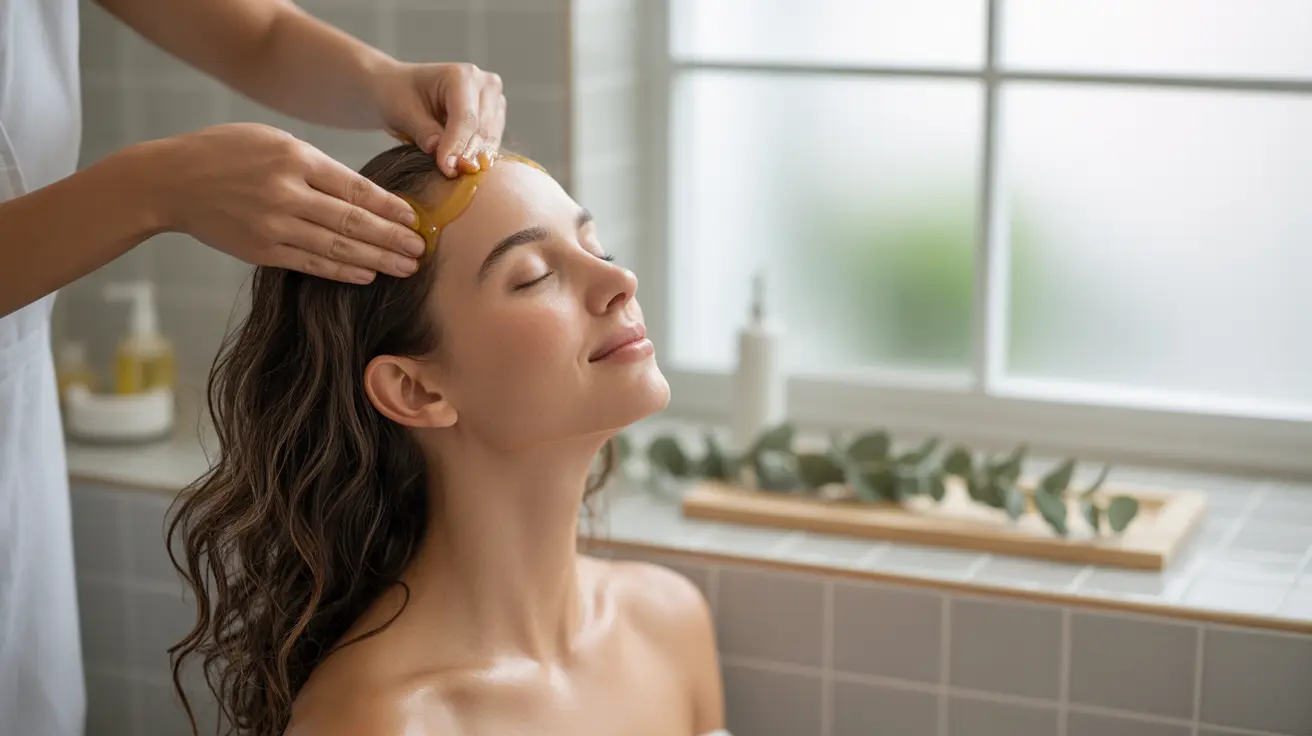Hair oiling, an ancient practice deeply rooted in traditional hair care, has gained significant attention for its potential benefits in promoting hair growth and maintaining scalp health. This comprehensive guide explores the science behind hair oiling and how it can transform your hair care routine for better results.
Whether you're dealing with hair loss, seeking to enhance your hair's natural growth, or simply looking to improve your overall hair health, understanding the proper techniques and benefits of hair oiling can make a significant difference in your hair care journey.
Understanding Hair Oiling and Its Benefits
Hair oiling involves massaging natural oils into your scalp and hair strands to nourish and protect them. This practice works by penetrating the hair shaft, strengthening the hair from within, and creating a protective barrier that prevents moisture loss and environmental damage.
The massage technique used during application also stimulates blood circulation in the scalp, potentially encouraging hair follicle growth and promoting healthier hair development.
The Science Behind Hair Growth and Oiling
When you apply oils to your scalp, they help create an optimal environment for hair growth by:
- Providing essential nutrients and fatty acids
- Protecting the hair follicles from oxidative stress
- Reducing protein loss from hair strands
- Improving blood circulation to the scalp
- Balancing scalp oil production
Best Oils for Hair Growth
Coconut Oil
Rich in lauric acid and penetrates deep into the hair shaft, preventing protein loss and strengthening hair structure.
Castor Oil
Contains ricinoleic acid and omega-6 fatty acids, known for their potential to promote hair growth and reduce inflammation.
Argan Oil
High in antioxidants and vitamin E, helping to protect hair from damage while promoting elasticity and shine.
Proper Hair Oiling Technique
To maximize the benefits of hair oiling, follow these essential steps:
- Warm the oil slightly to enhance absorption
- Section hair and apply oil directly to the scalp
- Use gentle circular motions to massage the scalp
- Work the remaining oil through hair lengths
- Leave on for at least 30 minutes or overnight
- Wash thoroughly with a gentle shampoo
Frequency and Timing
The optimal frequency for hair oiling depends on your hair type and concerns. Generally, oiling 1-2 times per week works well for most people. Those with very dry hair might benefit from more frequent applications, while those with oily scalps may need to oil less frequently.
Common Mistakes to Avoid
To ensure the best results from hair oiling, avoid these common pitfalls:
- Using too much oil
- Not washing thoroughly
- Applying oil to dirty hair
- Rough handling during application
- Using the wrong type of oil for your hair type
Frequently Asked Questions
Does hair oiling really help with hair growth, and how does it work?
Hair oiling can promote growth by nourishing the scalp, improving blood circulation, and protecting hair follicles. The massage technique stimulates blood flow to the scalp, while nutrients in the oils support healthy hair growth by strengthening the hair shaft and preventing breakage.
How often should I oil my hair for maximum growth and scalp health?
For optimal results, oil your hair 1-2 times per week. Those with dry hair may benefit from more frequent application, while those with oily scalps should limit to once weekly. Always consider your hair type and scalp condition when determining frequency.
What are the best types of oils to use for hair growth, and are there differences between them?
Different oils offer unique benefits. Coconut oil prevents protein loss, castor oil may stimulate growth, and argan oil provides antioxidant protection. Choose based on your hair type and specific concerns. You can also blend oils to combine their benefits.
Can hair oiling help with dandruff, dryness, or hair breakage, and how should I apply it for these issues?
Yes, hair oiling can address these concerns. For dandruff, use antifungal oils like coconut or tea tree. For dryness and breakage, focus on moisturizing oils like argan or jojoba. Apply directly to problem areas and ensure thorough but gentle massage.
Are there any risks or side effects of hair oiling, and is it safe for all hair types?
Hair oiling is generally safe for all hair types, but excessive use can lead to buildup or greasiness. Some people may experience allergic reactions to certain oils. Always patch test new oils and adjust the amount and frequency based on your hair's response.




